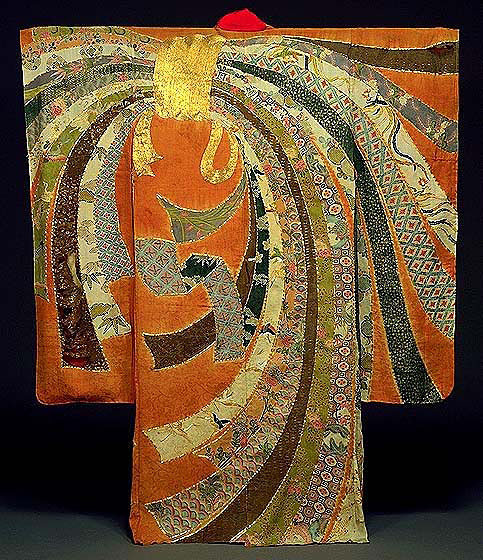File:Item07bfurisode.jpg
Item07bfurisode.jpg (483 × 560 pixels, file size: 202 KB, MIME type: image/jpeg)
This is an excellent example of an Edo Period yuzen-dyed kimono. Colorful noshi (auspicious strips of dried fish or seaweed) are bundled at the left shoulder and flow over the body in a dynamic composition.
This kimono was produced with painstaking techniques. First, figured crepe was shibori (tie)-dyed red, leaving the noshi sections white. Then, gold threads were stitched onto the surface around the borders of the noshi strips. The noshi strips were then decorated with auspicious motifs, such as pine, bamboo, plum, paulownia, phoenixes, cranes, peonies, waves and shokko medallions. Yuzen dyeing was the predominant technique used in these decorations, with supplementary surface decorations in embroidery, pressed kinpaku (gold leaf), and suribatta stencil dyeing.
The bold noshi pattern, with its multi-layers of auspicious motifs, and the vivid, showy colors of this furisode kimono well represent the aesthetic sensibilities of the mid-Edo Period.
File history
Click on a date/time to view the file as it appeared at that time.
| Date/Time | Thumbnail | Dimensions | User | Comment | |
|---|---|---|---|---|---|
| current | 17:11, 1 January 2009 |  | 483 × 560 (202 KB) | Linden (talk | contribs) | This is an excellent example of an Edo Period yuzen-dyed kimono. Colorful noshi (auspicious strips of dried fish or seaweed) are bundled at the left shoulder and flow over the body in a dynamic composition. This kimono was produced with painstaking tech |
- You cannot overwrite this file.
File usage
The following page uses this file: